Ever looked at a building and thought about who made its plan? Many times, it’s not just people but also AI architecture design. This AI help is like a quiet helper, always there but not always seen, making plans better and work easier.
It’s not something coming in the future; it’s happening now. If you want to know how AI architecture design is changing the way we build, you’re reading the right thing.
Benefits of Using AI Architecture Design
AI architecture design isn’t just a fancy phrase; it’s a big deal. Think about finishing designs way faster, getting the most out of space without redoing math over and over, or seeing how things will change as they get older.
That’s the power of AI architecture design. It’s like having a special look into the future, showing architects stuff they either couldn’t see or took a long time to figure out.
And buildings that are good for the planet? AI architecture design makes sure that being eco-friendly isn’t just words. AI architecture design helps turn those good ideas into real buildings.
You can also explore our in-depth article: 18 Powerful AI Tools for Architects: You Must Know
Comprehensive List of AI Architecture Design Tools
1. Adobe Firefly

In the big world of building design, Adobe Firefly stands out as a shining star. You might ask, “What’s the big deal about it?” Let’s dive in. Adobe, a brand we all know for creative tools, has added AI to Firefly. This makes it a top choice for architects.
At its heart, Firefly aims to get and boost your creative ideas. It’s not just another app for cool effects; it’s an app that works with you. Picture this: you’re designing and thinking about the right look to go for.
Suddenly, Firefly offers ideas that fit just right with what you’re doing. It’s like having a quiet partner, always there with smart suggestions.
Using other Adobe apps? Firefly blends in easily, making your work smoother. No need to switch between apps or worry if they’ll work together. The best bit? It’s user-friendly. Even if AI is new to you, Firefly makes it easy to learn.
To sum it up, Adobe Firefly isn’t just an AI architecture design app; it’s a game-changer. It’s all about making building design quicker, smarter, and better. In today’s fast-paced world, Firefly makes sure you’re always ahead.
2. Maket.ai
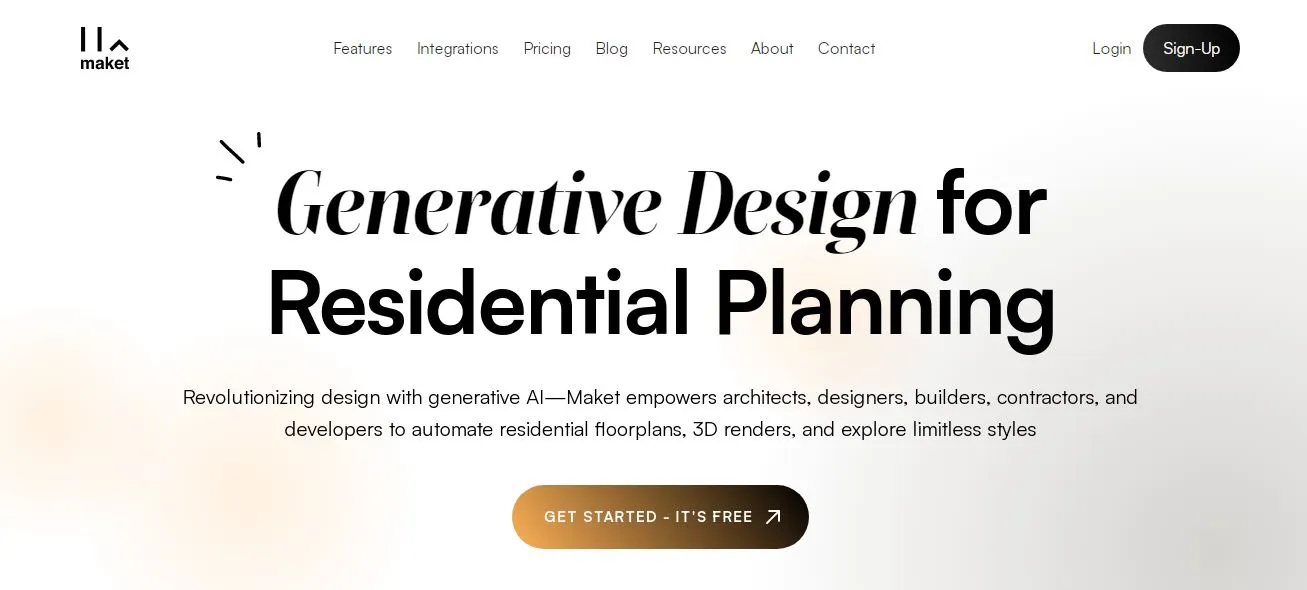
The world of building design is full of hurdles. From detailed client wishes to limited space, architects often feel like they’re in a puzzle. But imagine if there was a tool to show the way. That’s where Maket.ai comes in.
Maket.ai is more than just a program; it’s a forward-thinking platform with AI at its heart. What’s its main aim? To make the tricky design steps easier.
Using Maket.ai, architects can quickly come up with many design choices that fit a project just right. It’s like having a big idea session, but with AI giving the suggestions.
A big plus of Maket.ai is how it spots patterns. It looks closely at what the project needs, making sure the designs are spot-on. Whether it’s a home wanting a warm feel or a business place looking for a fresh style, Maket.ai nails it.
But it’s not only about being fast and smart. Maket.ai adds fun to the design. Gone are the long hours of drawing by hand, where time seemed to drag. With Maket.ai, every design sparkles with fresh ideas, giving architects a great starting point.
To sum it up, Maket.ai is what’s next in AI architecture design. It’s the spot where tech and art come together, giving architects the top tools. So, if you want to change how you design, Maket.ai is your best bet.
3. Autodesk Forma
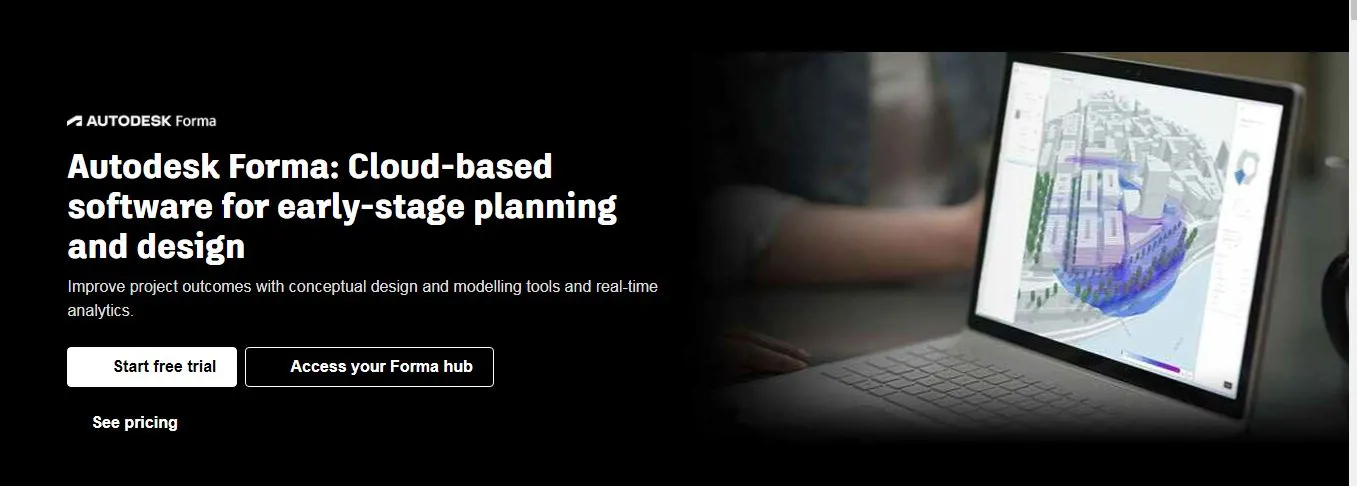
In the world of AI architecture design, being exact matters a lot. Autodesk Forma, once called Spacemaker, really shows this exactness. This tool does more than just make designs; it brings them to life from the start.
With Forma, architects and their teams can see their projects on a screen even when they’re just ideas. What makes it special? It can guess future design problems and offers automatic fixes.
Think about knowing issues ahead of time and having ready solutions. That’s what Forma does. It sets projects upright, making sure every part of the design, from using space well to looking good, is just right. The cherry on top?
It works well with other programs, making designing smooth from start to finish. In today’s fast-paced world, Forma helps architects not only work faster but also make their designs better.
4. Sidewalklabs
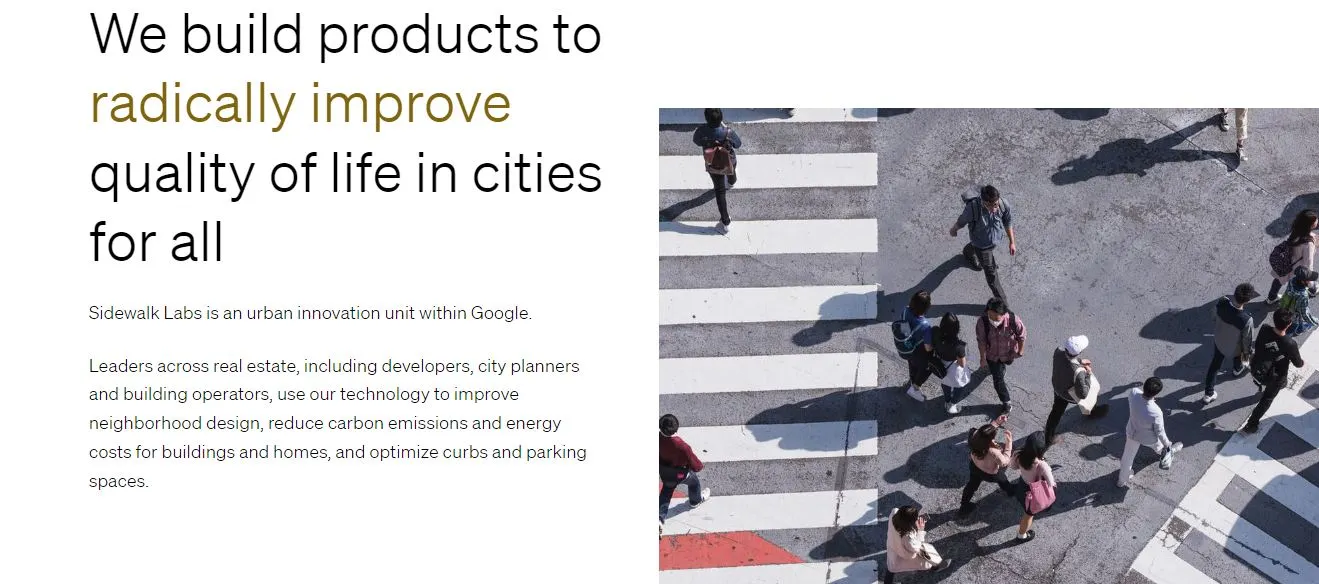
City design and AI architecture design are closely linked. And for city innovations, Sidewalklabs is a top name. Made by Alphabet Inc., the company behind Google, Sidewalklabs is not just an app; it’s a dream for better, smarter neighborhoods.
Whether you’re a building designer, town planner, or just someone who loves city areas, Sidewalklabs has got you covered. It brings a bunch of new ideas, tools, and research to improve city living.
From making bus routes better to adding parks, Sidewalklabs uses AI to turn cities into places people not only live in but also love.
It’s more than just bricks and streets; it’s about making moments, memories, and close-knit groups. As more of us move to cities, Sidewalklabs shines a light on how to build them right.
5. Get floorplan
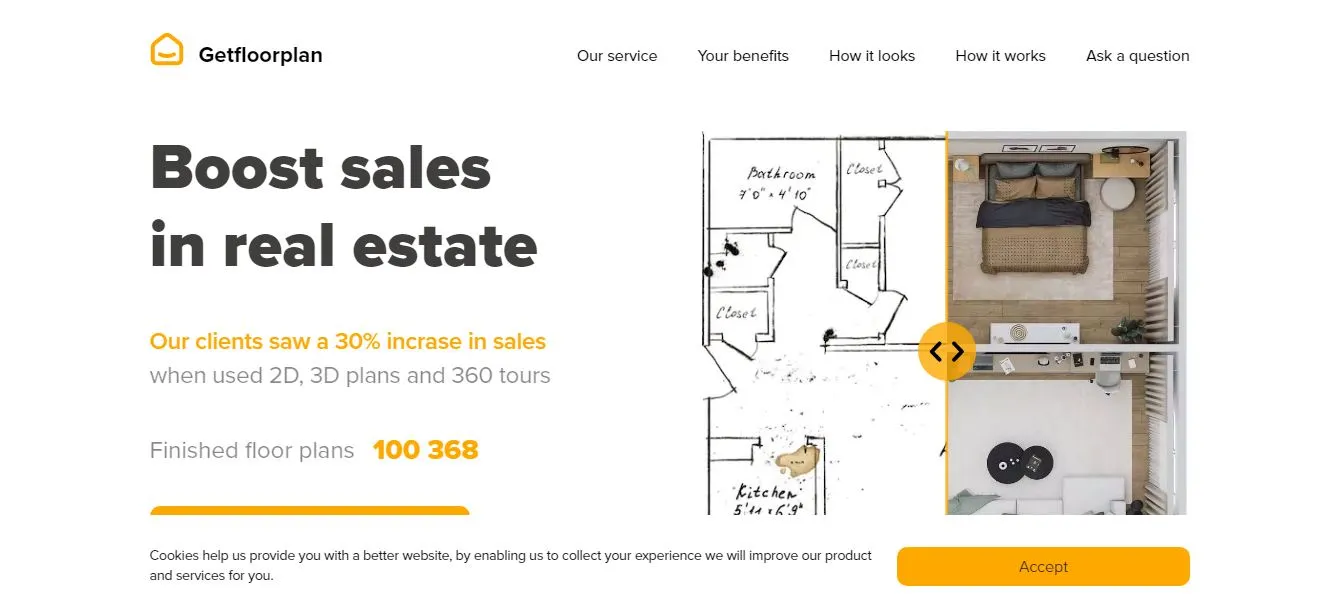
Every amazing AI architecture design begins with an idea, and every idea starts with a layout. Get Floorplan is a tool that turns simple thoughts into real 3D designs.
But it’s more than just a 3D tool. With Get Floorplan, people can change, adjust, and try out different looks, making sure every part is just right. It’s like having a digital playground where designers can try out ideas freely.
The tool’s smart features make sure designs are not only good-looking but also work well. It shows what’s great, finds what’s not, and even gives tips to make things better.
In short, Get Floorplan connects what a designer dreams and what actually gets built. It makes designing easier, making sure what you imagine is what you really create.
6. Archistar

In the big world of AI architecture design, seeing the bigger picture can make all the difference. That’s where Archistar comes in.
This tool gives a top-down view, but it offers more than just that. It goes deeper, letting architects know important rules for site planning. Whether it’s knowing how tall buildings can be, what areas are for, or spotting special zones, Archistar handles it.
Now, with all this info, how does it stay user-friendly? It’s all in its flexible design tools. Archistar isn’t stiff; it moves with you. It lets designers change and experiment, making sure they can always be creative.
In a job where every bit of space counts, Archistar makes sure architects have everything they need, right when they need it.
7. TestFit
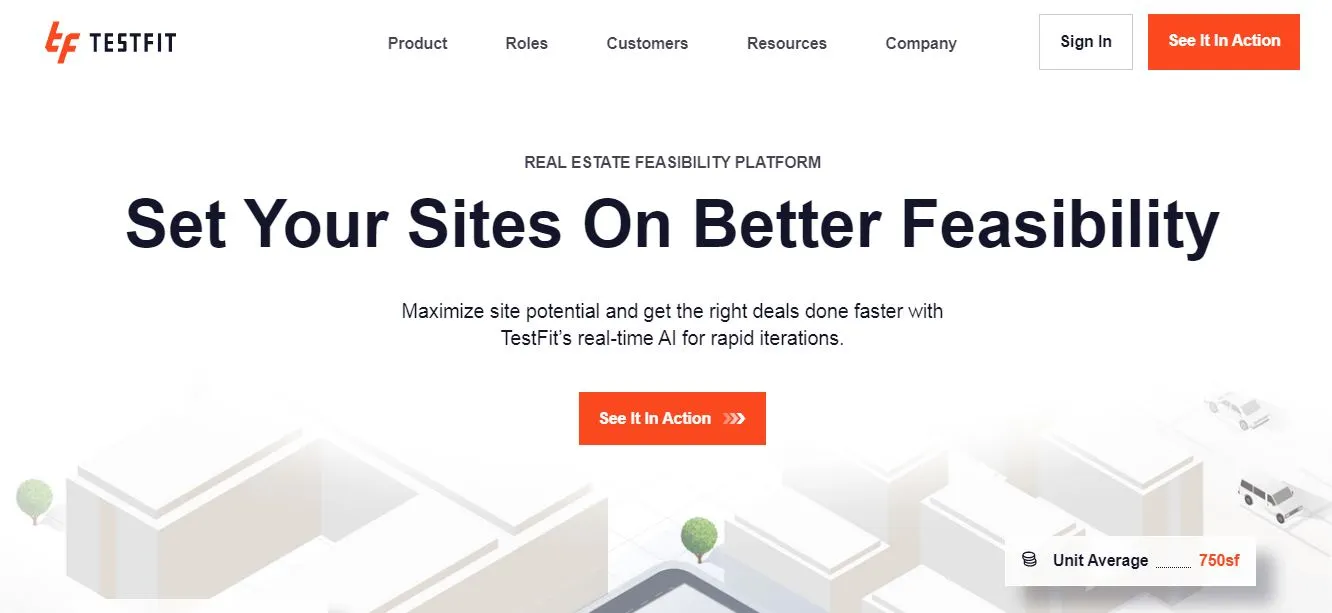
Real estate and AI architecture design often go hand in hand. And for making the most of a site’s potential, TestFit is the top choice. Think about seeing many design options for a place, all based on what you want.
That’s what TestFit does. It’s not just about making designs; it’s about making designs that work. With its easy-to-use setup, architects don’t have to spend hours on tasks like counting parking spots or drawing many design ideas.
They can spend more time on new ideas. TestFit makes things faster, letting architects get the most out of a site without getting stuck on the small stuff.
8. Interior AI

Decorating a space is a form of art, and with Interior AI, it’s art mixed with tech. This tool doesn’t just design rooms; it gives them a new look. Users give a flat picture, and Interior AI changes it to match many styles.
Whether you want a simple style or a fancier one, Interior AI can do it. But it’s more than just looks. The tool lets users change how a room is used, turning a regular living room into an office or even an outside sitting area.
It’s all about being able to change, be creative, and try new things. With Interior AI, there are so many ways to make a space special and different.
9. Digital Blue Foam
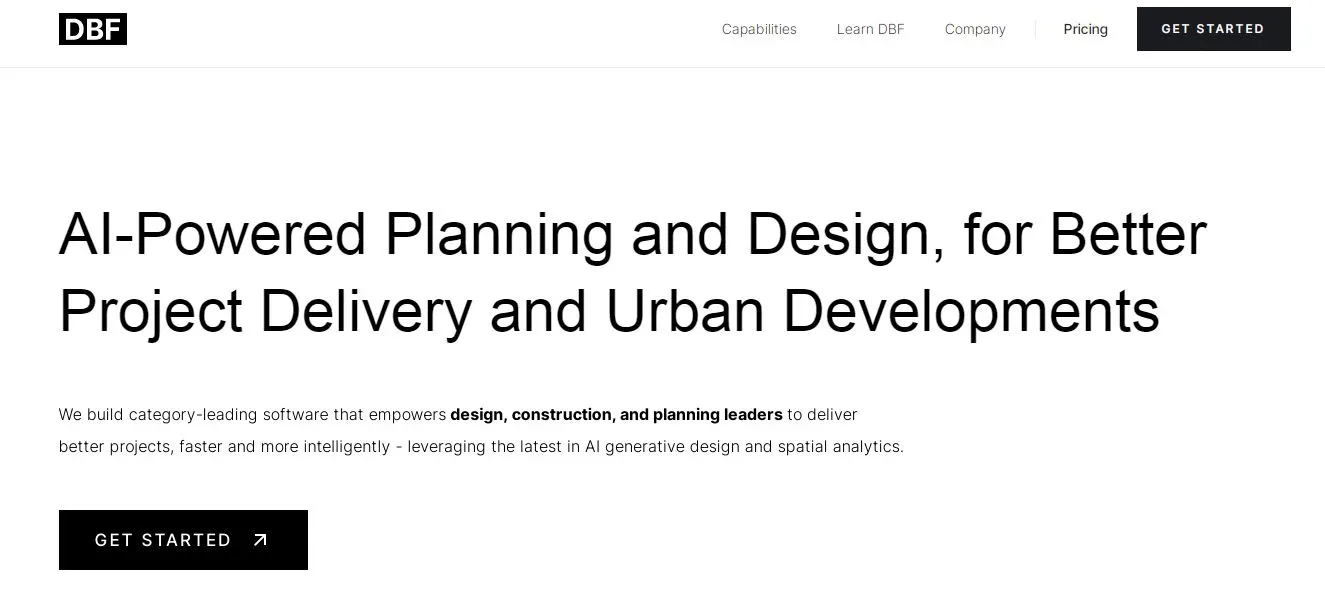
Working together is important in today’s online world. Digital Blue Foam gets this, offering a platform that’s not just simple but also helps people work together. It brings smart and detailed design tools right to your computer.
So, what’s in it for architects? It means doing great work quicker. It means designs based on facts but still full of creativity. Digital Blue Foam isn’t just an app; it’s like having a helper.
It supports architects from start to finish, from gathering info to working together in real time. In times when many are working from home, Digital Blue Foam makes sure being apart doesn’t stop the creative flow.
It’s all about designing in a smart, quick, and united way with the help of AI architecture design tools.
How to Choose the Right AI Tool for Architecture Design
Picking the best AI tool for your building design needs might seem like searching for a tiny piece of a big puzzle. But don’t worry; it’s easier than it sounds.
First, figure out what you need. Do you want help with designing or more with seeing the design? Once you know, look at how easy the tool is to use. A tool can be great, but if it’s hard to use, it might not be for you.
Then, see how it works with other apps you have. And always check out the user group and help options. A big group of users can offer lots of helpful hints and advice.
Finally, think about the price. The priciest tool isn’t always the top one. It’s about getting the most for what you can pay. So, when you’re looking for an AI tool, keep these ideas in mind. They’ll help you find what fits you best.
Future Trends: What’s Next for AI Architecture Design?
AI in building design is always changing. It’s like a stream, always moving and bringing new ideas and changes. So, what’s coming next? First, AI will be even more a part of designing.
We’ll see AI architecture design tools that work closely with architects, getting to know how they like to design. Next, there’s the focus on eco-friendly design.
With our planet’s climate changing, AI architecture design will help make buildings that are good for the environment, use less energy, and leave a smaller mark on the Earth. And we can’t leave out virtual reality.
Think about seeing inside a building before it’s even built. With AI and VR, that’s going to be a regular thing, letting architects and their clients see and feel spaces in new ways.
The road ahead for AI architecture design is exciting, with new things that will change not just how we make buildings but also how we live in them.
Conclusion
AI’s adventure in building design is just starting, and it’s shaping up to be an exciting ride! From making designs better to thinking up new ways to use spaces, AI is about to change how we see architecture.
As you explore this area, remember it’s more than just tech; it’s about what could be. It’s about looking at a plan and seeing more than just drawings. It’s about imagining a time when buildings are more than just walls and roofs but real experiences.
So, if you’re a designer, learning, or just someone who loves thinking about spaces, jump into the AI world. Explore all it offers, and maybe, just maybe, you’ll make something amazing!
Here are a few other hand-picked articles for you to read next:
- Top 10 Best AI Tools For You That Can Change The Way You Work
- 10 Powerful And Best AI Tools For Developers: Expert Guide
- 30 Best AI Tools: The Magic For The Changing World
FAQs
Can AI do architectural design?
Absolutely! AI has made significant strides in the realm of architectural design. It can assist architects by automating repetitive tasks, optimizing designs based on specific criteria, and even suggesting innovative design solutions based on vast datasets. While AI doesn't replace the creativity and intuition of a human architect, it certainly enhances the design process, making it more efficient and data-driven.
How to use AI in architecture design?
Incorporating AI in architectural design involves using specialized software that integrates machine learning and data analytics. These tools can analyze site conditions, predict material performance, and even simulate how a design would perform in real-world conditions. By inputting specific criteria, architects can get design suggestions, optimize space utilization, and ensure sustainability. Training is essential, as with any tool, to harness AI's full potential in design.
What is the concept of AI architecture?
AI architecture refers to the structured framework used to define the various components of an AI system, their interrelationships, and the manner of their interaction. It's like a blueprint for building AI systems. This architecture ensures that AI solutions are built in a scalable, sustainable, and structured manner, allowing for growth, adaptability, and efficiency.
What is an example of AI architecture?
A notable example of AI architecture is the neural network. Neural networks are algorithms designed to recognize patterns and are structured similarly to the human brain, with interconnected nodes (akin to neurons). These networks can be trained using vast amounts of data to perform specific tasks, such as image recognition or language processing. Over time, they adjust and refine their connections based on the data they process, improving their accuracy.
What is the future of AI architecture?
The future of AI in architecture is incredibly promising. As technology advances, we can expect even more sophisticated tools that offer real-time design solutions, sustainability assessments, and virtual reality integrations. AI will likely play a pivotal role in sustainable and green building designs, optimizing energy use, and reducing environmental impact. Furthermore, with the rise of smart cities, AI-driven architectural solutions will be at the forefront, ensuring urban spaces are efficient, sustainable, and conducive to modern living.
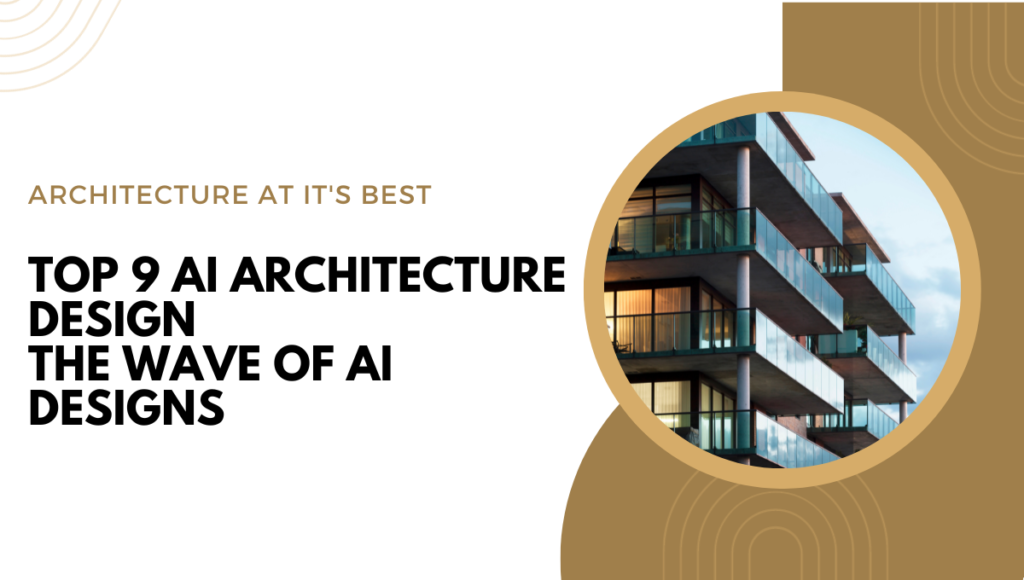
You May Also Like
10 Best AI face creator To Craft Faces with a Click
10 Best AI Image Creator Tools: Design Beyond Limits
10 Best AI music creator: The Future Sound of Music
10 must read Powerful Expert AI Content Marketing Tools: Ultimate Guide
10 Powerful and Best AI Tools for Developers: Expert Guide
10 Ultimate Trending AI Tools: Your Perfect AI Guide